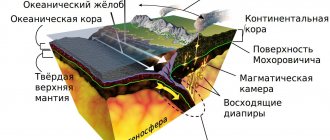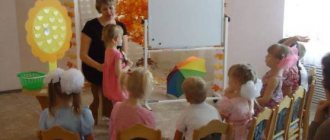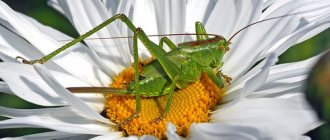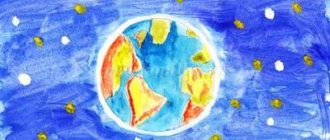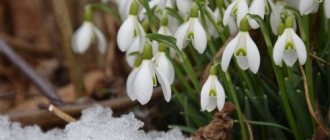GCD "Human Internal Organs"
Children:-
Yes (consider themselves or neighbors).
-But this is what we see, and there are many different organs inside our body. We don’t see them, but thanks to them, we live, breathe, think, eat. Guys, we can’t do without Professor Serdechkin and that’s why we will now go to visit him. Let's stand up, close our eyes and count to 5. Surprise moment: the professor's arrival. Hello guys, let us introduce you to the most important organs today...
Children:
- Let's.
Take a seat at the tables. Educator:-
Here is a diagram showing these organs. After getting to know each organ, you will color them in with markers and try to remember them.
Children:-
(look at the drawings)
Educator: -
Look at the image and find the head (children show the teacher what they found), well done.
What do you think is in it? Children: -
(give their guesses)
Educator: -
This is the brain.
It is one of the most important organs. Why do you think we need it? Children: -
To think (give their guesses)
— One of the most important organs is the brain. He is like the boss over all organs, he knows everything and is responsible for everything. The brain helps a person to be human. Think . Walk. Do different jobs.
One of the most important properties of our brain is memory. Our memory contains everything that a person learns during his life. And for memory to be good, it must be trained. Now, with the help of one exercise, we will train our memory.
Exercise: In front of the children are three-dimensional geometric shapes (cone, ball, pyramid, cube). Which? How many are there? (Children's answers).
You must remember the location of geometric shapes. Now close your eyes and see what has changed. Guys, when do you think our brain can rest? (children's answers)
— Our brain rests at night when we sleep darkly. Now let's find the brain in our drawing, take a brown pencil and color it.
Educator:-
Well done guys!
Now let's get acquainted with another important organ. Guess the riddle. Day and night it knocks, as if wound up. Children: -
(give their guesses)
Educator:-
Pay attention to
the heart
(the teacher points to the model with a pointer).
Place your palm on your chest. What do you feel. Children: -
Something is beating, this is the heart.
Educator:
The heart is located in the center of the chest, almost in the middle, and the size of a fist. Form your hand into a fist and place it in the center of your chest, slightly to the left. Make a fist with your hand. This is your heart. Do you and I have the same heart size? Why? The heart is like a big pump that pumps blood. Blood “runs” throughout the body through different vessels. The main task of blood is to feed the entire body. The heart works constantly, even when a person sleeps. Now clench and slightly unclench your fist - this is how the heart works: when it contracts, it pushes blood. What color is our blood? How did you find out about this? When blood flows from your wound, adults rush to treat the wound and stop the bleeding. This is very, very important because losing blood is very dangerous. How do you treat your wounds? The heart must be protected. But if a person decides to lie down all the time and do nothing to protect his heart, he will be very mistaken and will only harm his heart. The heart needs to be trained and exercise. When you run, your heart works faster. Place your palm on your heart, how does your heart beat? Quiet, calm. And now we will do a physical minute and compare whether something has changed or not
Body structure - presentation for children
The internal structure of a person is the same for everyone, but everyone’s appearance, figure, facial features, hairstyle are different.
- Bones . The human body consists of many bones.
Bones are the support of our body. All the bones in the body form a strong frame - the skeleton. There are 206 bones in the human skeleton.
- Breathing . A person can live without air for only a few minutes.
The nose, larynx, bronchi and lungs help a person breathe. During inhalation, air enters the body.
It contains oxygen, which supplies nutrients to the body.
- Digestion . Our body needs fuel to function well. This “fuel” is food. It gives the body energy. Food travels a long way when it enters the body. Once in the stomach, food breaks down into tiny pieces, useful substances are extracted from it, and bad substances are removed from the body.
- Circulatory system . The blood dissolves all the necessary substances and delivers them to all parts of the body. The human body contains about 5 liters of blood. The heart helps blood “run” inside the body. The heart never gets tired and always, day and night, works.
- Brain . You think, learn, rejoice, feel sad, wonder, sleep and dream - all this happens in your brain. The brain never sleeps! He is always busy: watching his breathing, digesting food, “thinking” about the events of the past day.
- Vision . A person needs eyes to see what is happening around him.
The eyes analyze the brightness, color, size of an object and send this information to the brain.
- Rumor . Sounds cause air particles to vibrate. When these vibrations reach our ears, we begin to hear.
- Smell . There are many invisible smells in the air, but the nose “sees” them well.
It distinguishes many smells and gives us important information. For example, the nose will “tell” that food has spoiled and should not be eaten.
- Taste . The tongue helps distinguish tastes. The tongue is the most flexible part of the body. The tongue recognizes four basic tastes: sweet, salty, sour and bitter.
- Skin is the protective shell of our body. It protects us from dirt and germs,
from heat and cold. The skin is the largest and heaviest organ of the body.
- The hardest part of the body is teeth . They are covered with enamel. Teeth are necessary for grinding food.
- Hair covers almost the entire human body. Hair protects the body and helps retain heat. Especially long and thick hair grows on the head. Hair can be of different colors, shapes and lengths.
- Nails protect and strengthen the fingertips, where the nerve endings that control touch are located.
Drawing a person in kindergarten Teacher-methodologist Elena Egorovna Zaitseva. - presentation
Drawing a person in kindergarten Teacher-methodologist Elena Egorovna Zaitseva
2nd junior group Themes of images: doll, snowman, tumbler.
2nd junior group In drawing, first depict a large circle - the body, and then a smaller circle - the head. The image is supplemented with lines (hands), dots (face).
2nd junior group If desired, you can draw expressive details (buttons, pockets, etc.).
Middle group Familiarity with the triangular shape in this group makes adjustments to the way a person is depicted.
Middle group. Stages of drawing 1. Examine the doll in a long sundress and, with an outlining gesture, highlight the triangular shape of the sundress, paying special attention to the width of its lower part.
Middle group. Stages of drawing 2. Draw a horizontal line at the bottom of the sheet, commenting on your actions with the words: “What a wide sundress!”
Middle group. Drawing steps 3. Place a dot in the middle of the top of the sheet. 4. From this point, draw inclined lines to the ends of the horizontal line.
Middle group. Drawing Steps 5. Then draw a circle (head) on the top of the equilateral triangle.
Middle group. Stages of drawing 6. To the left and right of the vertex of the triangle we draw rectangles, orienting children to the fact that their length is equal to half the height of the triangle (sundress).
Middle group. Stages of drawing 7. The image is supplemented with details (facial features, hair, palms, collar, etc.) 8. Children may not depict legs.
Senior group At this age, when depicting a person, a child must learn to show the following in a drawing: 1. The proportions of the figure (the ratio of the head, torso, arms and legs). 2. The structure of the figure (head, neck, shoulders, torso, legs, etc.). 3. Movement of arms, legs, head. 4. Convey the comparative height of the figure of an adult and a child.
Senior group. Stages of drawing: Children draw in clothes. Therefore, before you start drawing, you need to consider the shape of the shirt, shorts, dress, etc.
Senior group. Stages of drawing Drawing begins with the shape of the body, i.e. from a shirt or blouse, shorts or skirt. We mark the middle of the body, since this line (waist line) becomes a guideline when drawing arms in motion.
Senior group. Stages of drawing Next, draw an oval of the head, neck, arms, legs, etc. The length of the arms and legs (approximately) is equal to the length of the combined height measurements of the shirt and shorts (or blouse and skirt).
Senior group. Stages of drawing The size of the head depends on whether the picture is an adult or a child. The size of an adult's head fits 7-8 times the height of the entire figure. In a child, this size ranges from 4 to 5 times.
Senior group. Stages of drawing In the drawing of the head, facial features, ears and hair should be clearly visible. All movements of the human figure are performed from the front.
Man image option 2
Man image option 3
Preparatory group In the preparatory group, children depict a human figure in profile. This method is more complicated, but the drawing is more expressive. A profile image conveys movement better.
Thank you for your attention and good luck in your work!
